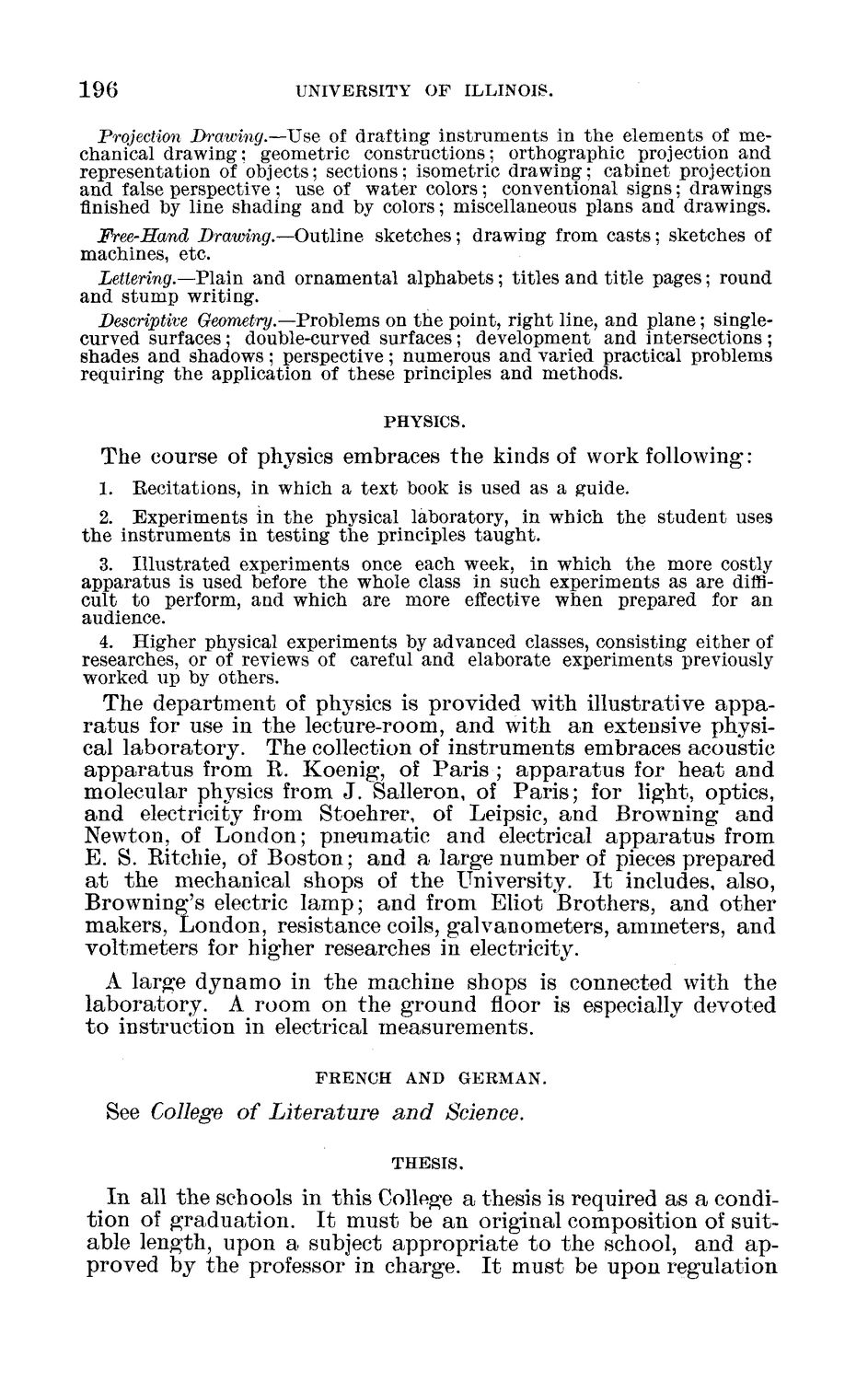| |
| |
Caption: Board of Trustees Minutes - 1890
This is a reduced-resolution page image for fast online browsing.

EXTRACTED TEXT FROM PAGE:
196 UNIVERSITY OF ILLINOIS. Projection Drawing.—Use of drafting instruments in the elements of mechanical drawing; geometric constructions; orthographic projection and representation of objects; sections; isometric drawing; cabinet projection and false perspective ; use of water colors; conventional signs; drawings finished by line shading and by colors; miscellaneous plans and drawings. Free-Hand Drawing.—Outline sketches; drawing from casts; sketches of machines, etc. Lettering.—Plain and ornamental alphabets; titles and title pages; round and stump writing. Descriptive Geometry.—Problems on the point, right line, and plane; singlecurved surfaces; double-curved surfaces; development and intersections ; shades and shadows; perspective; numerous and varied practical problems requiring the application of these principles and methods. PHYSICS. The course of physics embraces the kinds of work following; 1. Recitations, in which a text book is used as a guide. 2. Experiments in the physical laboratory, in which the student uses the instruments in testing the principles taught. 3. Illustrated experiments once each week, in which the more costly apparatus is used before the whole class in such experiments as are difficult to perform, and which are more effective when prepared for an audience. 4. Higher physical experiments by advanced classes, consisting either of researches, or of reviews of careful and elaborate experiments previously worked up by others. The department of physics is provided with illustrative appar a t u s for use in the lecture-room, and with an extensive physical l a b o r a t o r y . The collection of instruments embraces acoustic a p p a r a t u s from R. Koenig, of P a r i s ; a p p a r a t u s for heat and molecular physics from J. Salleron, of P a r i s ; for light, optics, a n d electricity from Stoehrer, of Leipsic, and Browning and Newton, of L o n d o n ; pneumatic and electrical a p p a r a t u s from E. S. Ritchie, of B o s t o n ; and a large number of pieces prepared a t t h e mechanical shops of the University. I t includes, also, Browning's electric l a m p ; and from Eliot Brothers, and other makers, London, resistance coils, galvanometers, ammeters, and voltmeters for higher researches in electricity. A large d y n a m o in the machine shops is connected with the l a b o r a t o r y . A room on the ground floor is especially devoted t o instruction in electrical measurements. FRENCH AND GERMAN. See College of Literature and Science. THESIS. I n all t h e schools in this College a thesis is required as a condition of g r a d u a t i o n . I t must be a n original composition of suitable length, upon a subject a p p r o p r i a t e t o the school, and approved by the professor in charge. I t must be upon regulation
| |